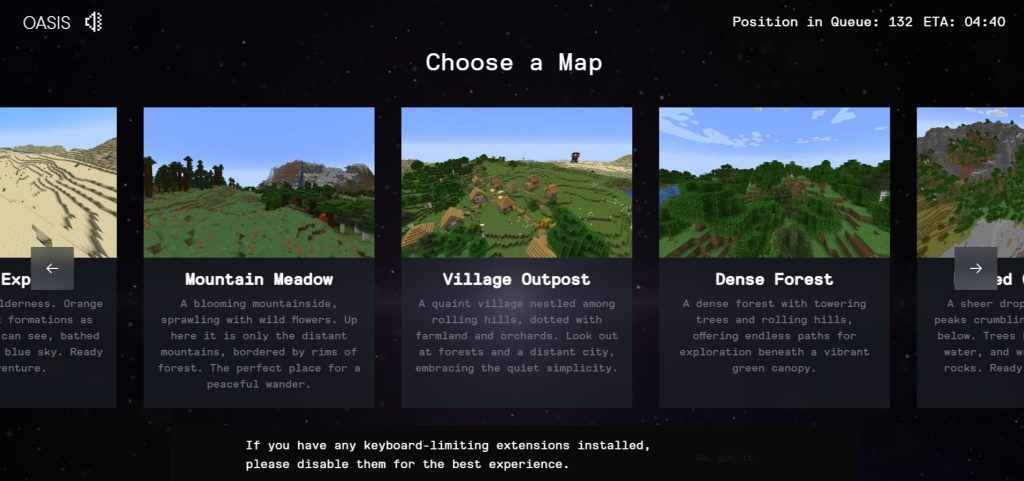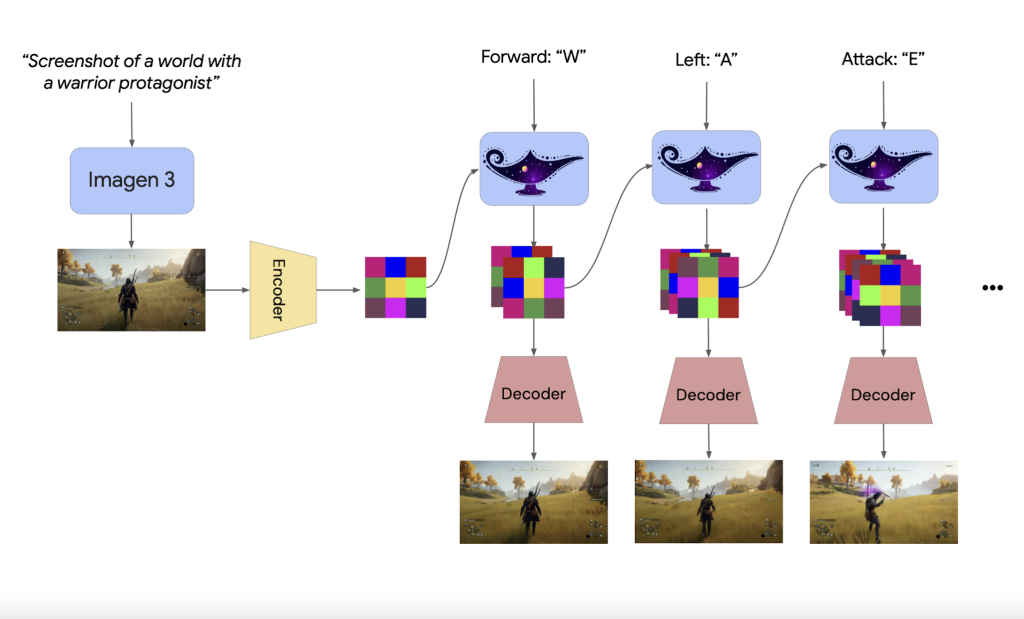DeepMind’s Genie 2 explained: The AI tool that aims at redefining interactive 3D worlds

DeepMind’s new AI model, Genie 2, makes creating 3D interactive worlds as easy as describing them with text or showing an image. Whether it’s a robot exploring a forest or other imaginative scenes, the tool brings them to life in real time. It’s a big step for AI creativity, but it also raises questions about how it uses existing content and the impact it might have on industries like gaming and design. Genie 2 is shaping up to be a fascinating addition to the AI space.
 Survey
SurveyBridging imagination and reality
At its core, Genie 2 is about translating imagination into reality—or, at least, virtual reality. The model’s ability to simulate environments packed with accurate lighting, physics, and animations allows users to navigate these worlds as if they were characters in a video game. DeepMind claims that the system can produce scenes comparable to AAA video games, bolstered by its training data, which likely includes video game playthroughs.
Yet, this is where things get murky. While DeepMind hasn’t disclosed specifics about its training data, its affiliation with Google and access to platforms like YouTube bring legal ambiguities to light. Does Genie 2 essentially create derivative works from copyrighted video games it “watched” during training? These unanswered questions could turn into courtroom dramas, especially given how critical IP protections are in the gaming industry.

Genie 2 sets itself apart by solving problems that have plagued similar AI models. For instance, Decart’s Minecraft simulator, Oasis, suffers from poor resolution and forgetfulness – losing track of level layouts mid-simulation. In contrast, Genie 2 can remember off-screen elements and re-render them accurately when they reappear. Moreover, it supports a range of perspectives, from first-person to isometric views, while maintaining consistent interactions. The model is clever enough to understand that arrow keys should move a robot, not the surrounding trees or sky. These advancements highlight DeepMind’s technical prowess, making Genie 2 a standout in the nascent field of world modelling.
However, there’s a catch. Genie 2’s creations last only a minute, with most simulations wrapping up in 10 to 20 seconds. This limitation makes it less suited for long-term gaming experiences. Instead, DeepMind envisions it as a research and prototyping tool – a way to experiment with AI in unique, controlled environments. For creators, Genie 2 represents a powerful tool for rapid prototyping. Concept artists can now turn sketches into fully interactive environments, bringing ideas to life faster than ever. DeepMind underscores this in its blog, emphasizing Genie 2’s ability to transform “concept art into interactive experiences” seamlessly.

Researchers, too, stand to gain. By crafting diverse virtual worlds, Genie 2 provides fresh challenges for AI agents. These agents, unexposed to such tasks during training, can be evaluated in scenarios that test their adaptability and problem-solving capabilities. In essence, Genie 2 could redefine how researchers measure AI’s performance across a variety of domains.
Weaving through the controversies
As groundbreaking as Genie 2 is, it also invites scrutiny. The gaming industry, in particular, might view it as a double-edged sword. On one hand, it democratizes access to tools that were once exclusive to major studios. On the other, it could lead to job displacement as companies adopt AI for tasks traditionally handled by human artists and developers. This concern isn’t baseless. Industry giants like Activision Blizzard have already integrated AI to boost productivity – often at the cost of human roles. Genie 2 could amplify this trend, raising ethical questions about the balance between innovation and job preservation.
Additionally, the spectre of copyright infringement looms large. If Genie 2 uses video game footage for training without explicit permission, it could set off legal battles that shape the future of AI research. Google’s assertion that its terms of service allow the use of publicly available content only adds fuel to this fire.

DeepMind’s vision for the future
Despite these challenges, DeepMind’s ambitions remain undeterred. The development of Genie 2 aligns with Google’s broader push into AI-powered world modelling. Recent hires, including Tim Brooks from OpenAI and Tim Rocktäschel from Meta, reflect the company’s commitment to advancing this frontier. Genie 2 also hints at applications far beyond gaming. In architecture, it could revolutionize virtual walkthroughs for clients. In education, dynamic virtual classrooms could become the norm. The entertainment industry could use it for everything from pre-visualizing movie scenes to creating custom game levels. The possibilities are endless.
As DeepMind continues to refine its capabilities, Genie 2 may well become the benchmark for AI-driven creativity. Its ability to merge cutting-edge technology with artistic freedom signals a shift in how we approach virtual environments. Whether it becomes a force for democratization or controversy, one thing is certain: Genie 2 is only the beginning.
Satvik Pandey
Satvik Pandey, is a self-professed Steve Jobs (not Apple) fanboy, a science & tech writer, and a sports addict. At Digit, he works as a Deputy Features Editor, and manages the daily functioning of the magazine. He also reviews audio-products (speakers, headphones, soundbars, etc.), smartwatches, projectors, and everything else that he can get his hands on. A media and communications graduate, Satvik is also an avid shutterbug, and when he's not working or gaming, he can be found fiddling with any camera he can get his hands on and helping produce videos – which means he spends an awful amount of time in our studio. His game of choice is Counter-Strike, and he's still attempting to turn pro. He can talk your ear off about the game, and we'd strongly advise you to steer clear of the topic unless you too are a CS junkie. View Full Profile